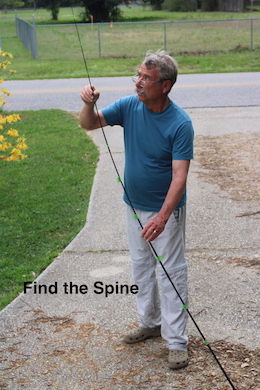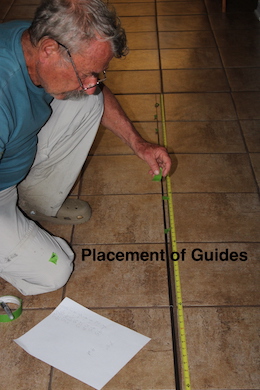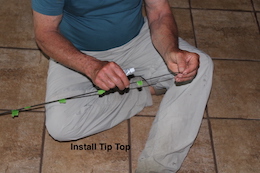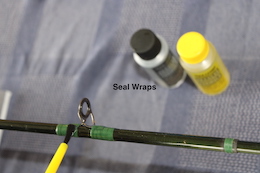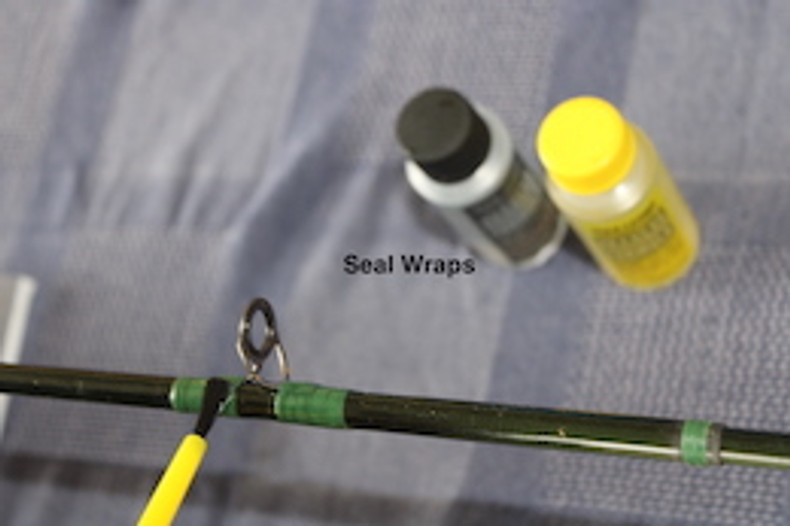Build Your Own Fly Rod? You Bet!
Building any kind of fishing rod from scratch is a very educational, fairly inexpensive, and totally fulfilling thing to do. Besides all of that, it’s fun. But building a fly rod from scratch is even more rewarding. There’s nothing quite like fishing with a fly rod that is totally individual and self-made.
Some Decisions to Make
The first step in the fly rod building process is to decide just what kind of rod to build. After all, there are hundreds of fly rod actions, sizes, and weights. Building any fly rod is a process of decisions- lots of them.
Let’s keep this simple. What kind of fishing do you do? Think about a new self-built fly rod maybe in a weight and action different from what you now own.
Rod building suppliers have rod blanks- that’s the primary part of all rods- in many kinds, weights, sizes, and yes, prices. Anglers will have to decide what kind of rod blank will meet their needs. Anglers can pay a great deal for a high-end rod blank, or they can select a very low-cost blank. For first-rod efforts, I’d suggest a pretty inexpensive blank.
Reel seats, line guides, and handles all come in different sizes and different materials for different needs, and the price of these parts varies also. Even color and finish are choices to be made. It helps to have an experienced and affordable rod material supplier to go to for help, and for this, there’s no better source than GB Fly Shop. Tommy and Chris at GB Fly Shop works hard to make sure an angler building a fly rod gets the parts and supplies needed quickly and at the best prices.
The Process – (Images Below)
When it comes to building a rod, it is very much the best situation to have a dedicated space with plenty of room to put the rod together and to be able to leave it unfinished for later completion. I’ve built rods on the kitchen table where I had to pack everything up and store it away for family meals, and this is not best. It slows down the building process a lot. Good lighting is very important. You’ll be working with small parts and delicate, close attention-necessary work when winding reel guides, and being able to see how the threads are lying on the wrap is very important.
Equipment Required
A good thing about building a fishing rod is that equipment requirements, at least in the initial stages of a rod-building career, are really quite simple.
A rod builder needs to have a winding support- this holds the rod blank while the guides are being wrapped on. A winding support can be built by the rod builder with simple tools and readily obtained materials, or a finished support can be purchased inexpensively. A rod builder needs a rod-turning wheel, which is basically a motorized plastic chuck which holds one end of a rod in construction and a supporting wheel which allows the rod to spin freely but under control. This is used when epoxy wrap sealer is applied to seal and strengthen the wrapped guides. A pack of single-blade razors is needed to cut the guide wrapping thread very close to the finished wraps without any tag ends. That’s it.
Of course, many large-scale rod builders find the need for much more elaborate equipment, and that’s fine. But for a first-timer or the rod builder who makes only a few rods, this equipment is all that is needed. And this level of equipment can turn out some great rods.
Steps in the Process
We can’t go into total detail on rod building at this point, but there are excellent online videos which show how individual builders handle each step of the process.
First and perhaps most important step when the rod builder is getting started is to find the rod blank’s spine. Each rod- fiberglass, graphite, bamboo- whatever- has a spine. That’s a place in the blank’s construction where the rod has maximum strength. That’s the point we’ll want to place our fly rod guides and align the reel seats and handle. We find the spine by placing the thicker end of each rod section on the floor and bending the other end of the section up slightly to produce a distinct bend. Then roll the section slowly through its full circumference. At some point, the rod section will “bump” as it rolls. That’s the spine of that section. Attach a piece of masking tape on the blank section and mark the place where the blank section “bumped”. When we build the rod, all of the sections will have the spine marked and we can align the marker locations.
Once we have the spine identified for the entire rod, we can attach the hardware such as tip top, guides, reel seat, and handle- all of which must be aligned with the spine.
Placing the line guides in the correct location on any rod is very important. There are good sources online (www.fishinginschools.org/cafcas/guidespacing or https://gbflyshop.com/guide-spacing-chart/) which have generic fly rod guide spacings for the different lengths of rods.
Wrapping the line guides is fun- sort of. When done correctly a well-wrapped line guide is a thing of beauty. The thread should lie flat with no overlaps, and there should be no big gaps. Now, to be honest, most of my rod guide wraps are not perfect, and I almost always have some minor gaps where I didn’t get the threads to lie perfectly. But my rods still work. And this is one of those hands-on activities that tend to improve with use and experience. The more rods you build, the better the wraps look.
Once the line guides are wrapped, we will need to apply a thread sealer, and by far the best substance to permanently seal and reinforce rod line guides is a two-part epoxy sealant. There are multiple brands of guide wrap sealant, but they all have a limited pot life once mixed, so the builder will need to work steadily to brush on the epoxy before it starts to set up. This is where the needed rod-spinner wheels come in. The almost finished rod is chucked into place, the spinner is turned on, the rod rotates very slowly and the epoxy sealant is brushed on. As the rod slowly spins, the epoxy will harden and set up perfectly even and level on all sides.
That’s it. And in the morning when the guide-wrap sealant is hard and finished, we’ve got a rod.
Potential Problems- and the Reward
As in any starting project, the first rod built is likely to have some flaws. Most anglers can accept this, but if perfection is the goal, it might be better to expect that from the hundredth rod built rather than the first. Also, if the builder has a skin sensitivity to epoxy, that can be a problem. There are other kinds of wrap sealants, but they tend to set up slower and not be quite as perfect in finish. But the biggest problem most rod builders find is that after that first rod is built, finished, and fished, the builder can’t wait to get started on a new rod. It’s a truly addictive process.
The biggest reward to any rod-builder comes when a first-timer takes that finished rod to the lake or to the saltwater and lands a fish with it. Now, that’s a very, very nice feeling, and it’s a feeling that demands to be repeated.
